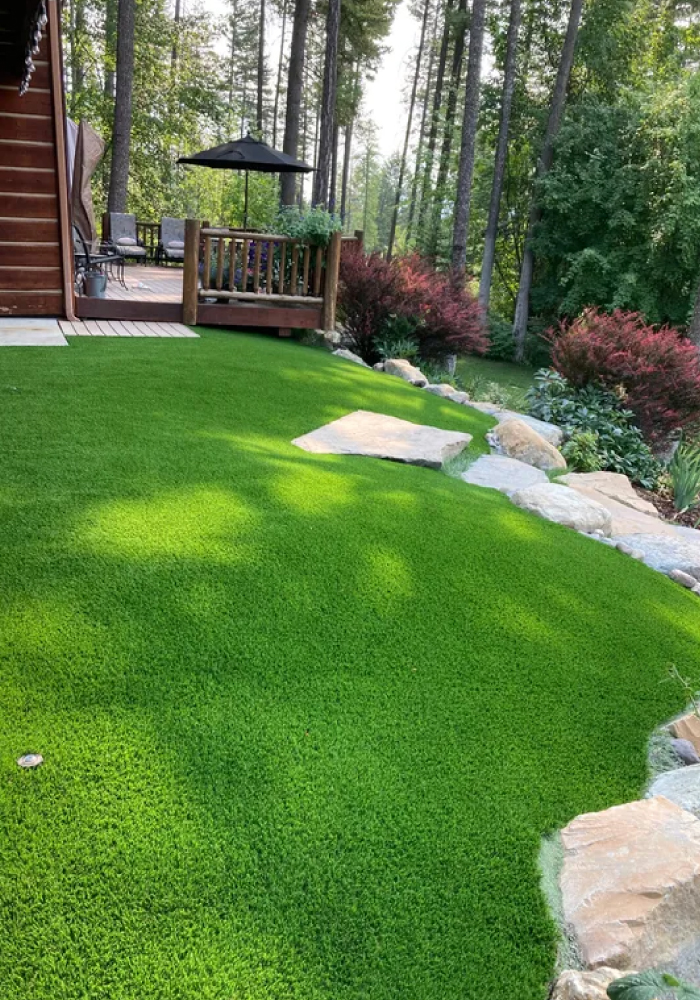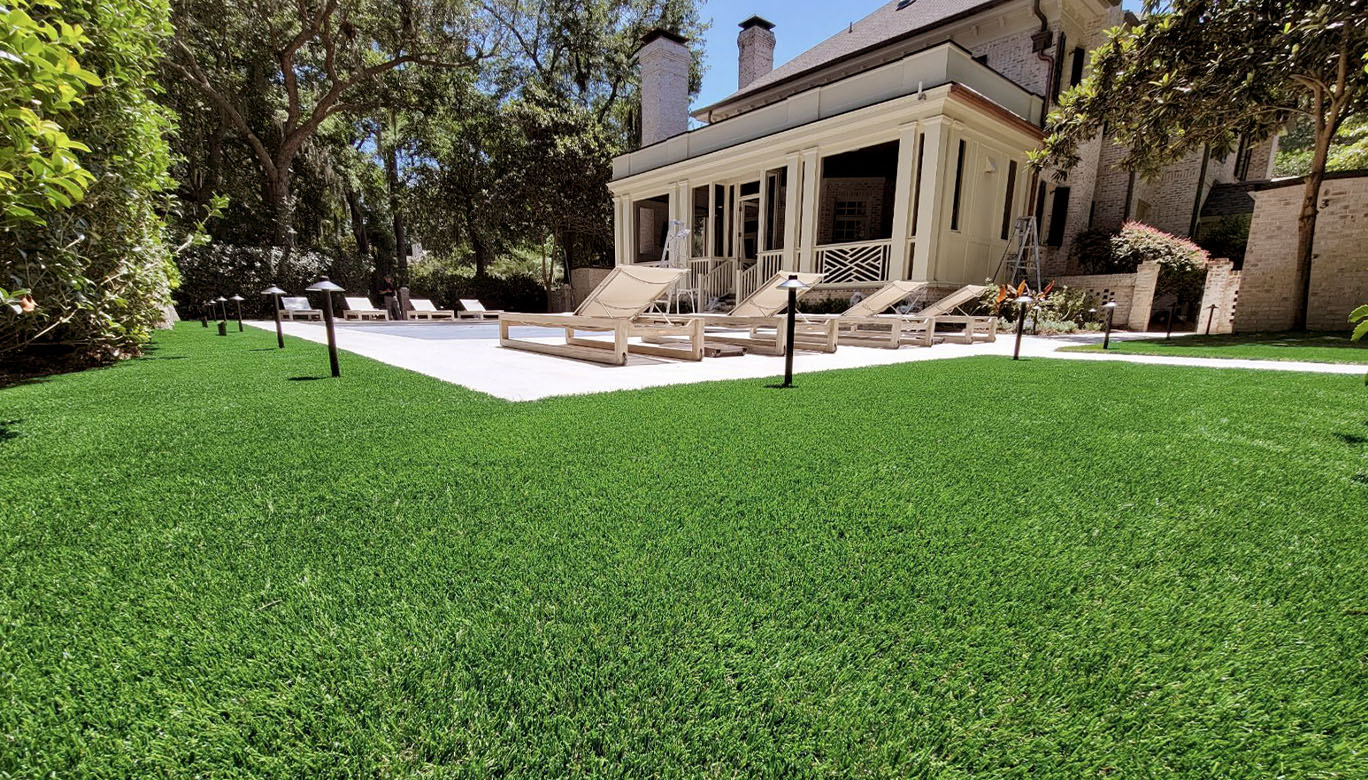Professional Arizona Turf Installation Services for Home and Business Use
Professional Arizona Turf Installation Services for Home and Business Use
Blog Article
Explore the Environmental Conveniences of Opting for Synthetic Grass Solutions
The adoption of synthetic grass remedies presents a compelling opportunity to deal with pushing environmental challenges. By significantly decreasing water use and minimizing the application of hazardous chemicals, these options not just advertise lasting landscaping yet additionally shield local ecosystems. Moreover, the reduced carbon impact connected with decreased maintenance activities adds to an extra sustainable strategy to land management. However, the effects of these benefits expand past simple conservation efforts, questioning concerning their lasting effect on environment preservation and overall ecological balance. Exploring these measurements exposes a complex interplay worth considering.
Water Preservation Benefits
One of the most significant benefits of artificial turf is its ability to conserve water. In contrast, fabricated lawn does not require watering, substantially minimizing the general need for water resources.
By removing the requirement for routine watering, artificial grass adds to lasting landscape practices and assists minimize the ecological impact of too much water consumption. The conservation of water extends to the decrease of overflow, which can lead to soil erosion and river contamination.
Furthermore, the installment of synthetic grass allows house owners and districts to allot water resources much more effectively, concentrating on important uses such as alcohol consumption water and farming. The change towards synthetic grass not only advertises accountable water use however also lines up with wider ecological goals targeted at protecting natural sources.
As neighborhoods significantly focus on sustainability, the water conservation advantages of fabricated lawn offer a compelling situation for its fostering in industrial and domestic landscape design jobs.
Minimized Chemical Usage
The transition to synthetic grass significantly reduces the dependence on chemical therapies commonly used in all-natural turf upkeep. Traditional lawn monitoring generally entails the application of herbicides, plant foods, and pesticides to advertise development and control bugs. These chemicals can present risks to human health and wellness, local wild animals, and the environment, contributing to soil and water contamination.
In comparison, artificial lawn removes the requirement for these harmful materials. When mounted, it requires very little maintenance, mostly including routine cleaning and seldom infill replenishment. This decrease in chemical usage not just profits the immediate atmosphere but additionally adds to more comprehensive eco-friendly stability. By reducing the release of synthetic compounds right into the community, synthetic grass advertises healthier dirt and water supply.
Additionally, the lack of chemical overflow associated with synthetic grass installations helps shield neighborhood rivers from air pollution, sustaining marine life and preserving biodiversity. Arizona artificial turf. As communities progressively prioritize lasting techniques, going with synthetic grass offers a feasible remedy that straightens with environmental conservation goals. Via this change, building owners can delight in rich green areas without endangering environmental health, leading the way for an extra lasting future
Reduced Carbon Impact

In addition, the installment of synthetic grass can result in significant water conservation. All-natural lawns need considerable amounts of water for watering, which not only includes in go to the website the carbon footprint connected with water extraction and treatment but additionally stress regional water sources. On the other hand, man-made lawn requires very little maintenance, requiring no watering, therefore dramatically minimizing water usage and its associated power expenses.
Furthermore, the durability of fabricated turf adds to its lower carbon impact. With a life-span of up to 15 years or even more, the need for constant replacements is diminished, leading to much less waste and lower power consumption in production and throwing away conventional lawn alternatives. Generally, synthetic grass offers a lasting alternative for eco mindful landscaping.
Habitat Conservation
Environment preservation is a critical consideration in the argument published here over landscape design options, especially when comparing man-made grass to all-natural turf. All-natural turf lawns frequently call for substantial upkeep, including the use of pesticides, plant foods, and herbicides, which can negatively influence regional ecosystems. These chemicals can seep into the dirt and rivers, hurting indigenous flora and animals and interrupting neighborhood habitats.
In contrast, synthetic grass offers a chance to minimize the eco-friendly footprint of landscaping. By deciding for synthetic lawn, home owners can minimize the interruption of natural environments related to conventional yard treatment practices. Fabricated turf eliminates the requirement for harmful chemicals, therefore protecting close-by wildlife and keeping the honesty of surrounding ecosystems. In addition, the installation of artificial turf can lead to the conversion of former lawn locations into more biodiverse landscapes, such as pollinator yards or native plant areas, which can support neighborhood wildlife.
Inevitably, the shift to man-made turf not only saves water and decreases maintenance initiatives but additionally cultivates a more unified relationship between human tasks and the native environment, promoting habitat preservation while doing so.
Long-Term Sustainability
Long-term sustainability is a crucial consider evaluating the advantages of man-made lawn over conventional lawn yards. Among one of the most considerable advantages of synthetic grass is its longevity; it can last approximately 15-20 years with minimal upkeep, whereas all-natural lawn requires regular reseeding and substitute. This long life reduces the demand for consistent sources, such as water, fertilizers, and pesticides, which are important for maintaining a healthy turf yard.
Additionally, synthetic lawn adds to a decrease in carbon emissions connected with grass care tools. Conventional yards frequently require gas-powered lawn mowers, leaners, and blowers, click here for more every one of which add to air pollution. Arizona turf. In contrast, man-made turf eliminates the demand for such devices, promoting a cleaner environment
Additionally, the production of synthetic grass significantly makes use of recycled materials, boosting its sustainability account. As manufacturers adopt eco-friendly techniques, the ecological footprint of artificial turf remains to decrease.

Conclusion
The adoption of synthetic grass solutions presents substantial environmental advantages, including considerable water conservation, lowered reliance on damaging chemicals, and a lower carbon footprint. In addition, synthetic grass help in protecting all-natural environments by lessening land disturbance and promoting long-term sustainability via making use of resilient materials. Collectively, these factors emphasize the possibility of synthetic grass to add favorably to ecological wellness and use a viable choice to traditional landscaping techniques in a progressively resource-conscious globe.
In comparison, man-made grass does not need watering, significantly reducing the overall need for water resources. By reducing the release of artificial substances into the ecological community, fabricated lawn advertises much healthier dirt and water systems.
Additionally, the installation of artificial grass can result in considerable water preservation. In contrast, artificial turf needs marginal upkeep, calling for no watering, thus substantially reducing water usage and its connected power expenses.

Report this page